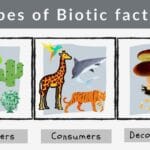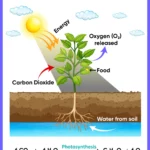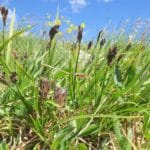Imagine a world hidden beneath our feet, a vast, interconnected network of roots and fungi spanning entire forests. This isn’t a scene from a fantasy novel, but a real phenomenon known as the “Wood Wide Web.” This intricate system, composed of microscopic fungal threads, acts as a superhighway for nutrients, water, and even communication signals between plants. This article delves into the fascinating science behind the Wood Wide Web and explores its transformative potential for creating more sustainable and resilient agricultural practices. Discover how understanding and harnessing this natural network can revolutionize food production, reduce our reliance on synthetic fertilizers, and cultivate healthier, more productive crops.
Delving into the Depths: Unveiling the Intricacies of the Wood Wide Web
Beneath the seemingly still surface of forests lies a dynamic world of connection and communication. The “Wood Wide Web” is more than just a collection of roots and soil; it’s a complex network of mycorrhizal fungi that intertwine with plant roots, forming a symbiotic relationship. These fungal networks act as extensions of the plants’ root systems, dramatically increasing their ability to access essential resources and facilitating communication across vast distances. This remarkable example of nature’s ingenuity highlights the interconnectedness of ecosystems and offers valuable insights into sustainable resource management.
The Underground Superhighway: Understanding the Mechanisms of the Wood Wide Web
Mycorrhizal fungi are the architects and engineers of this subterranean network. These microscopic fungi form a mutually beneficial relationship with plant roots. The fungi’s thread-like hyphae penetrate the soil, acting as an elaborate network that significantly expands the plant’s access to water and vital nutrients like phosphorus, nitrogen, and micronutrients. These nutrients are often locked up in the soil and inaccessible to plants without the fungi’s assistance. In return, the plants provide the fungi with sugars produced through photosynthesis, fueling their growth and allowing them to maintain the network. This exchange illustrates a perfect example of symbiosis, where both partners benefit from the relationship, increasing the overall efficiency of the ecosystem.
This exchange, however, extends beyond simple resource sharing. Scientists have discovered that trees and plants use these fungal networks to transmit signals to each other. For instance, a plant under attack from pests or diseases can send out a distress signal through the network, warning nearby plants to activate their defenses. This remarkable form of communication enables forests to respond collectively to threats. Research also indicates that plants can share resources, with larger, more established trees, often referred to as “mother trees,” selectively sending nutrients to younger saplings through the network. This nurturing behavior helps ensure the survival and growth of the forest’s younger generation. This intricate dance of resource sharing and communication underscores the interconnectedness of ecosystems and the importance of cooperation for survival.
Mother Trees: Guardians of the Forest and Their Kin
The concept of “mother trees” nurturing their offspring through the Wood Wide Web is particularly compelling. These mature, well-established trees within the fungal network act as central hubs, distributing resources to saplings in need. This selective support helps ensure the survival and growth of the next generation, promoting the overall health and stability of the forest ecosystem. Mother trees can also identify their kin, providing them with additional resources and support. While this concept is captivating, it’s important to note that ongoing research continues to uncover the intricacies of these interactions. Researchers are exploring the specific mechanisms by which mother trees recognize their offspring and the long-term consequences of this preferential treatment. What are the implications of these findings for forest management practices?
From Forest to Farm: Harnessing the Wood Wide Web for Sustainable Agriculture
The potential of the Wood Wide Web to revolutionize sustainable farming practices is immense. By understanding and utilizing this natural network, we can create more resilient and productive farms while reducing our reliance on synthetic inputs. Introducing mycorrhizal fungi into agricultural systems can significantly reduce our dependence on synthetic fertilizers, minimizing the environmental impact of agriculture. These chemical fertilizers often contribute to water pollution, soil degradation, and greenhouse gas emissions.
Moreover, leveraging the Wood Wide Web can enhance plant resistance to pests and diseases, leading to healthier and more robust crops. This approach reduces the need for harmful pesticides, which can have detrimental effects on beneficial insects, wildlife, and human health. Imagine farms that require fewer chemical inputs, promoting biodiversity and ecosystem health. This approach also holds the potential to improve soil health, increase water retention, and enhance carbon sequestration, contributing to climate change mitigation. Could this intricate underground network be a key to unlocking a more sustainable and resilient food system?
Navigating the Complexities: Challenges and Considerations for Agricultural Applications
While the potential of the Wood Wide Web in agriculture is promising, it’s important to acknowledge the challenges and uncertainties involved. The complexity of mycorrhizal networks makes it challenging to predict how they will behave in different farming environments. The effectiveness of introducing mycorrhizal fungi into agricultural settings (called mycorrhizal inoculation) can vary considerably depending on several factors, including the specific fungal species, soil conditions, the crops being grown, and the presence of other microorganisms.
It is also essential to consider the long-term effects of mycorrhizal networks on soil health. While research suggests that these networks can improve soil structure and nutrient cycling, more studies are needed to fully understand the long-term consequences of their introduction into agricultural systems. Extensive research is needed to translate the successes observed in natural forests into effective and reliable agricultural practices.
A Roadmap for the Future: Steps Towards Sustainable Farming with the Wood Wide Web
To fully leverage the Wood Wide Web in agriculture, a multi-pronged approach is essential:
- Identifying and Selecting Beneficial Fungi: Researchers need to identify the specific fungal species that work best with various crops and soil types. This involves extensive testing and careful observation in diverse agricultural conditions, considering factors such as nutrient uptake efficiency, disease resistance, and drought tolerance.
- Developing Effective Inoculation Techniques: We need cost-effective and efficient methods for introducing these beneficial fungi into farmlands. This might involve innovative techniques for fungal cultivation, soil application, and seed coating that ensure the fungi survive and thrive in agricultural settings.
- Conducting Long-Term Research: Long-term studies are crucial to fully understand the long-term impact of mycorrhizal networks on soil health, crop yields, and overall farm sustainability. Extended field trials under various conditions are vital for robust conclusions and to assess the economic viability of this approach.
- Integrating Mycorrhizal Management into Sustainable Farming Practices: Sustainable farming techniques should incorporate strategies that support and enhance the development of mycorrhizal networks within the soil. These strategies could include practices that improve soil structure, organic matter content, reduce tillage and promote biological diversity, such as cover cropping and crop rotation.
- Education and Outreach: Effectively communicating the benefits and best practices of using mycorrhizal fungi to farmers and agricultural professionals is critical for widespread adoption. This can be achieved through workshops, field days, online resources, and collaborations between researchers and farmers.
Envisioning the Future: A Vision of Sustainable Farms Powered by Mycorrhizal Networks
The potential benefits of harnessing the Wood Wide Web are immense. Imagine farms that require less fertilizer and pesticides, are naturally more resistant to pests and diseases, and even contribute to carbon sequestration, locking away carbon dioxide from the atmosphere. This would represent a significant step towards a more environmentally friendly and sustainable agricultural system. Achieving this potential requires continued research, funding, and collaboration among researchers, farmers, and policymakers. What steps can we take today to encourage this collaboration and accelerate the adoption of mycorrhizal-based farming practices?
Weighing the Options: Pros and Cons of Utilizing the Wood Wide Web in Agriculture
| Pros | Cons |
|---|---|
| Reduced reliance on synthetic fertilizers | Complexity of mycorrhizal networks and their interactions |
| Enhanced nutrient uptake and water availability | Difficulty predicting behavior in various agricultural settings |
| Increased crop resilience to pests and diseases | Uncertainty regarding long-term impacts on soil and crops |
| Potential for improved carbon sequestration | Possible variations in effectiveness across different fungal species |
| Improved soil structure and water retention | Potential for competition with native fungal communities |
| Enhanced biodiversity and ecosystem health | Cost and availability of high-quality mycorrhizal inoculants |
By understanding and effectively utilizing the remarkable Wood Wide Web, we can unlock a pathway towards a future of more sustainable and resilient agriculture. The journey requires continued exploration, collaboration, and a deep respect for nature’s intricate designs. The rewards, however, promise a greener and healthier world for generations to come.
Practical Application: How to Inoculate Crops with Mycorrhizal Fungi for Increased Yields
Key Takeaways:
- Mycorrhizal fungi significantly enhance crop yields and resilience by improving nutrient uptake (especially phosphorus), drought tolerance, and disease resistance.
- Various methods exist for inoculating crops with mycorrhizal fungi, ranging from commercial inoculants to on-farm production.
- Success depends on several factors, including the plant species, the mycorrhizal fungus strain, and application techniques. Experimentation and careful observation are essential for optimizing results.
- Challenges remain, particularly concerning the cost-effectiveness of on-farm production and the optimization of application techniques. Continued research is vital to address these challenges and unlock the full potential of mycorrhizal inoculation.
Unveiling the Underground Network: The Symbiotic Partnership
Imagine a vast, underground network connecting plants – a hidden highway of communication and resource exchange. This is the “Wood Wide Web,” more formally known as a mycorrhizal network, formed by symbiotic fungi and plant roots. These fungi extend their thread-like hyphae far beyond the reach of individual plant roots, acting as a natural plumbing system that facilitates the movement of water, nutrients, and even signaling compounds.
Nature’s Nutrient Highway: Understanding the Mycorrhizal Network
Mycorrhizal fungi form a mutually beneficial partnership with plants. The fungi provide plants with vital nutrients, particularly phosphorus, which plants struggle to obtain on their own. In return, the plants supply the fungi with sugars produced through photosynthesis. This symbiotic relationship is a cornerstone of healthy ecosystems.
This exchange isn’t just about nutrients; it’s a sophisticated communication system. Plants can even warn each other of impending dangers, like insect attacks, through the fungal network by releasing volatile organic compounds (VOCs) that travel through the hyphal network. Does this sophisticated network challenge our traditional views of individual plant survival and resource competition?
Putting the Wood Wide Web to Work: Enhancing Crop Yields through Inoculation
The benefits of this underground network extend to our crop fields. By inoculating crops with mycorrhizal fungi, we can mimic the natural processes that enhance plant health and productivity. This translates to higher yields, reduced need for fertilizers, and increased resistance to diseases and drought. Several studies have demonstrated that mycorrhizal inoculation leads to significant yield increases in various crops, including strawberries, peppers, and tomatoes. For example, some studies indicate a 15-20% increase in yield for inoculated tomato plants and improvements in fruit quality.
A Practical Guide: Methods for Inoculation
How to inoculate crops with mycorrhizal fungi for increased yields involves a variety of approaches:
- Commercial Inoculants: These pre-made products are convenient, readily available, and easy to apply. Follow the manufacturer’s instructions carefully for best results, paying close attention to the recommended application rate and timing. Consider the specific needs of your crops and choose a relevant product that contains a compatible mycorrhizal species.
-
On-Farm Inoculum Production: Some methods allow for on-farm production of inoculum. This approach can be more cost-effective in the long run but requires time, resources, and a deeper understanding of the process. It typically involves cultivating the mycorrhizal fungi on a suitable substrate, such as sterilized grain or vermiculite, and then incorporating the colonized substrate into the soil.
- Root Dip Method Seedlings are dipped in a slurry containing mycorrhizal spores before transplanting.
- Soil Incorporation Granular or powdered inoculants are mixed with the soil at planting.
- Seed Coating: Seeds are coated with a mycorrhizal inoculant before sowing.
Navigating the Challenges: Considerations for Successful Inoculation
While the potential benefits are significant, several challenges exist. The effectiveness of mycorrhizal inoculation varies greatly among plant species, soil types, and environmental conditions. Some plants respond more favorably to inoculation than others. Furthermore, the optimal application method, such as granular or liquid inoculants, can vary depending on the crop and soil. The long-term effects and overall cost-effectiveness of on-farm production also need further study. What are the most cost-effective inoculation methods for small-scale farmers with limited resources?
Charting the Future: The Promise of Mycorrhizal Inoculation
The future of sustainable agriculture is inextricably linked to the Wood Wide Web. Ongoing research aims to pinpoint optimal mycorrhizal species and inoculation techniques for different crops and soil types. This focused approach will unlock the full potential of this natural and sustainable agricultural strategy. Future studies should focus on understanding the complex interactions between mycorrhizal fungi, soil microbes, and plant genotypes to optimize inoculation strategies and maximize benefits.
Harnessing Nature’s Network: Mycorrhizal Networks for Crop Resilience & Soil Health in Arid Climates
Key Takeaways:
- Arbuscular mycorrhizal fungi (AMF) significantly improve nutrient uptake, water use efficiency, and plant defenses; thus, Mycorrhizal Networks: Boosting Crop Resilience & Soil Health in Arid Climates.
- AMF help plants withstand drought, salinity, and other environmental stresses commonly found in arid environments.
- While the benefits of AMF are well-established, the extent of these benefits can vary depending on factors such as the specific AMF species and prevailing environmental conditions.
- Optimizing AMF use in agriculture and making it cost-effective requires more research, particularly in arid and semi-arid regions.
- Collaboration among researchers, farmers, and businesses is key to wider adoption of AMF-based agricultural practices.
Revealing the Hidden World: The Underground Network in Arid Ecosystems
Imagine a vast, unseen network connecting trees and plants beneath our feet—a “Wood Wide Web” of fungal threads thriving even in arid environments. This network, primarily composed of arbuscular mycorrhizal fungi (AMF), is far more than just dirt and roots. It’s a dynamic ecosystem, a crucial player in forest and grassland health, and a potential game-changer for sustainable agriculture, especially in arid regions where water and nutrients are scarce.
Delving into Functionality: How Mycorrhizal Networks Operate
AMF form symbiotic relationships with plant roots. The fungi extend their thread-like hyphae far beyond the reach of a plant’s roots, acting like an underground plumbing system. These networks efficiently absorb water and vital nutrients, especially phosphorus and nitrogen, which they then share with their plant partners. This improved nutrient uptake is particularly beneficial in nutrient-poor or arid soils. In essence, the fungi act as an enhanced root system for the plants. But it’s more than just nutrient transport; AMF also strengthen plant defenses against diseases and pests, enhancing overall resilience. They also improve soil structure, increasing water infiltration and reducing erosion.
Mycorrhizal Networks in Action: Enhancing Crop Production in Arid Climates
The benefits of utilizing Mycorrhizal Networks for Crop Resilience & Soil Health in Arid Climates are significant. Studies consistently show increased crop yields and biomass, particularly in drought-prone areas. By improving water use efficiency, AMF help plants survive periods of water scarcity, making them more resilient to drought conditions. This reduces the need for irrigation, a crucial factor in arid and semi-arid farming systems. Furthermore, the enhanced plant health translates to reduced reliance on chemical fertilizers and pesticides, promoting environmentally sound agricultural practices. Can AMF revolutionize agriculture in water-scarce regions and contribute to food security?
Unveiling the Challenges: Considerations for AMF Application
While the potential of AMF is immense, we don’t have all the answers. The effectiveness of AMF varies considerably depending on several factors: the specific AMF species used, the type of crop plant, soil conditions, and even the overall soil microbiome. Some AMF species are more effective at enhancing drought tolerance, while others are better at improving nutrient uptake. Also, while the positive effects are generally accepted, some research suggests that AMF can sometimes have a carbon cost for the plant under certain circumstances. This is an active area of research, aimed at understanding the complex interplay and optimizing outcomes. How can we better predict AMF effectiveness in different environments and tailor inoculation strategies for specific crops and soil types?
Charting the Future: The Path Forward for AMF in Agriculture
The road ahead involves refining AMF strain selection, developing efficient and affordable inoculation methods, and creating accurate predictive models to guide AMF application. This requires collaborative efforts between researchers, farmers, agricultural businesses, and policymakers. Developing drought-resistant AMF strains and optimizing inoculation techniques for arid environments are critical priorities. We also need to improve our understanding of the complex interactions within the soil microbiome, enhancing the synergistic effects of AMF with other beneficial soil organisms. This collaborative effort will pave the way for the widespread adoption of AMF as a sustainable and effective tool in agriculture, leading to greater crop resilience and improved soil health in arid climates.
Unlocking the Potential: Leveraging the Wood Wide Web for Enhanced Nutrient Uptake in Diverse Soil Types
Key Takeaways:
- Mycorrhizal fungi form vast underground networks—the “Wood Wide Web”—connecting plants and acting as a conduit for nutrient exchange.
- These networks facilitate nutrient exchange, improving plant health, resilience, and overall productivity.
- Leveraging the Wood Wide Web for Enhanced Nutrient Uptake in Diverse Soil Types offers significant promise for promoting sustainable agriculture in a variety of environments.
- While research confirms the benefits, challenges remain in translating these findings into practical agricultural applications.
- Continued research and collaborative efforts are crucial to unlock the full potential of mycorrhizal networks and promote their widespread adoption in agriculture.
Delving into the Depths: Understanding the Underground Network
Imagine a vast, hidden highway system beneath our feet. This network isn’t made of concrete, but of fungal threads connecting trees and other plants in a complex, symbiotic relationship. This network is the “Wood Wide Web,” a complex ecosystem of mycorrhizal fungi that form partnerships with plant roots, exchanging nutrients for carbohydrates produced during photosynthesis. The fungi extend their reach far beyond individual root systems, creating a shared resource network that benefits all connected plants. This intricate web is crucial for forest health, and we’re only beginning to understand its potential for sustainable agriculture.
The Art of Nutrient Exchange: Nature’s Efficient Fertilizer System
Mycorrhizal fungi are masters of nutrient acquisition, particularly in accessing phosphorus, a vital nutrient often scarce in soils. The fungi extract phosphorus from the soil, converting it into a form that plants can readily absorb, and then transferring it to their plant partners through the intricate network. This enhanced access significantly boosts plant growth and reduces dependence on synthetic fertilizers, which can have detrimental environmental impacts. Isn’t that a remarkable feat of natural engineering that we can now harness? Effectively Leveraging the Wood Wide Web for Enhanced Nutrient Uptake in Diverse Soil Types allows us to consider this natural system for improved agricultural outputs and reduced environmental impact. Studies suggest that plants connected to a mycorrhizal network can experience a 40-70% increase in phosphorus uptake, along with improved access to other essential nutrients like nitrogen, potassium, and micronutrients.
Beyond Nutrients: Enhancing Resilience and Defense
Beyond enhanced nutrient uptake, the Wood Wide Web offers further advantages to connected plants. Plants connected through this network show greater resilience to drought stress by sharing water resources and improved access to soil moisture. They also gain indirect protection against diseases, possibly through communication and defense signal sharing among plants, and by outcompeting harmful pathogens. It’s like a natural early warning and defense system operating beneath our feet, constantly working to protect the plant community, isn’t it?
From Theory to Practice: Agricultural Applications of the Wood Wide Web
So, how can we harness the power of the Wood Wide Web in agriculture and translate its benefits into increased crop yields and enhanced sustainability? Introducing mycorrhizal fungi to agricultural systems through inoculation can significantly enhance crop growth, nutrient uptake, and overall productivity. However, challenges exist. The success of inoculation depends on several factors, including soil type, climate, crop species, and the presence of compatible mycorrhizal fungi already in the soil. Long-term effects and management strategies still require further research. We need to understand how to best manage these complex systems for sustainable agricultural gains and maximize their benefits for diverse crops and soil types.
Navigating the Challenges: Addressing Key Research Gaps
While the potential is immense, several hurdles remain to widespread adoption of mycorrhizal-based agricultural practices. The precise mechanisms for communication within the Wood Wide Web are still under investigation, and further research is needed to fully understand how plants and fungi interact within these networks. Further research is vital for the development of effective and reliable mycorrhizal inoculation methods tailored to specific crops and soil types. Moreover, quantifying the benefits across diverse agricultural settings demands rigorous experimentation using standardized protocols and long-term monitoring. We need large-scale studies demonstrating the long-term sustainability and economic viability of this approach in various agricultural systems. What specific research gaps need to be addressed to unlock the Wood Wide Web’s full potential and make it a viable option for farmers worldwide?
The Vision for the Future: Sustainable Agriculture Powered by Nature
Leveraging the Wood Wide Web for Enhanced Nutrient Uptake in Diverse Soil Types presents exciting opportunities to create more sustainable, resilient agricultural practices that minimize environmental impact and enhance crop production. This transformation requires a collaborative effort among scientists, farmers, and policymakers. Targeted research, effective inoculation techniques, and supportive policy guidelines are key to unlock the full potential of this natural resource and pave the way for a more sustainable agricultural future. Future research should focus on developing tailored mycorrhizal solutions for various crops and soil types, evaluating the environmental and economic viability of this approach, and promoting widespread adoption through education and outreach. By understanding and leveraging this interconnected underground network, we can create a more sustainable and resilient food system for generations to come.
- Unlocking Ada Lovelace’s Secret: The First Computer Programmer’s Vision - July 31, 2025
- Revolutionizing Knowledge: The Printing Press and a New Age - July 31, 2025
- Unlock Da Vinci’s Genius: To-Do Lists Revealed - July 31, 2025
















